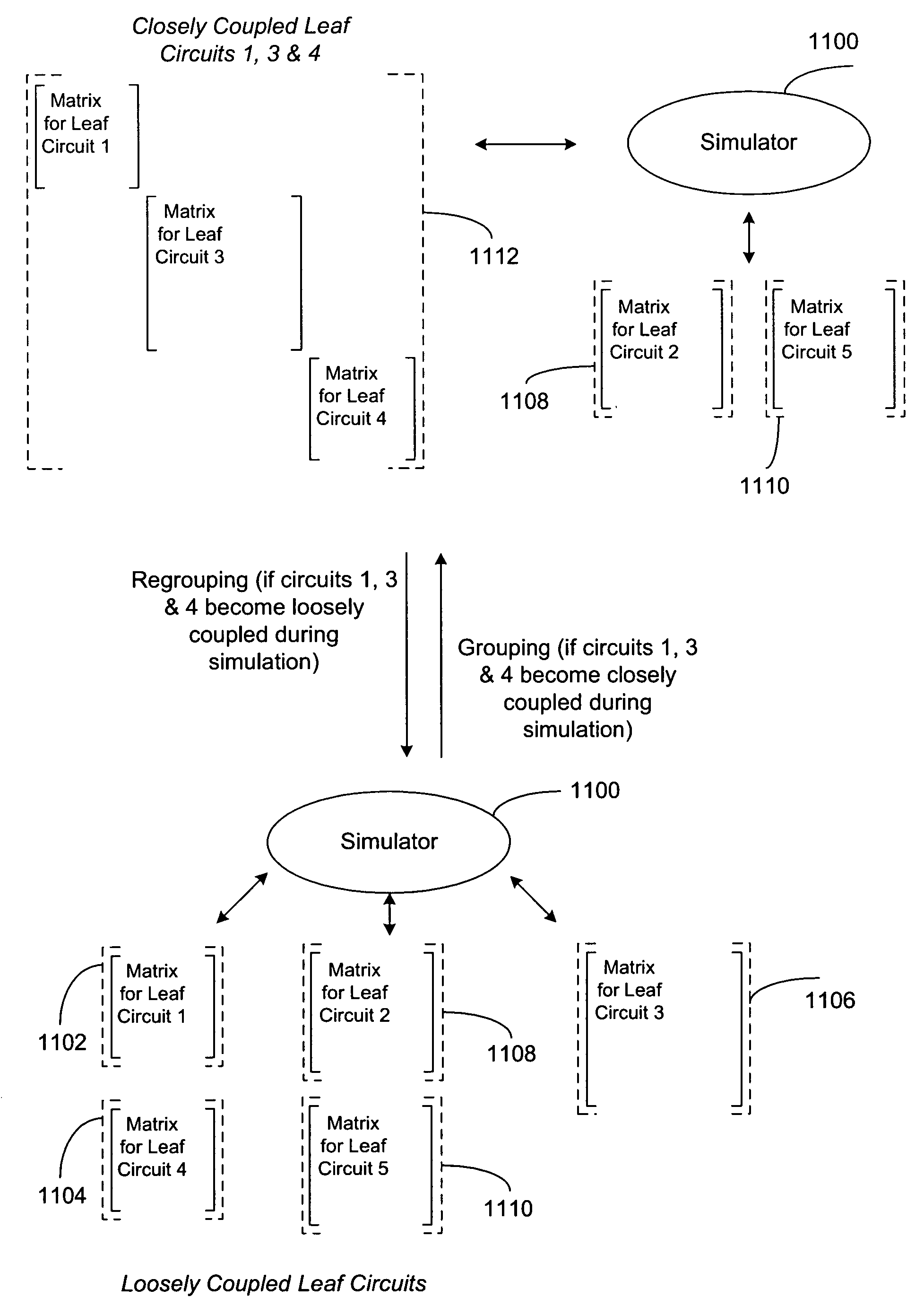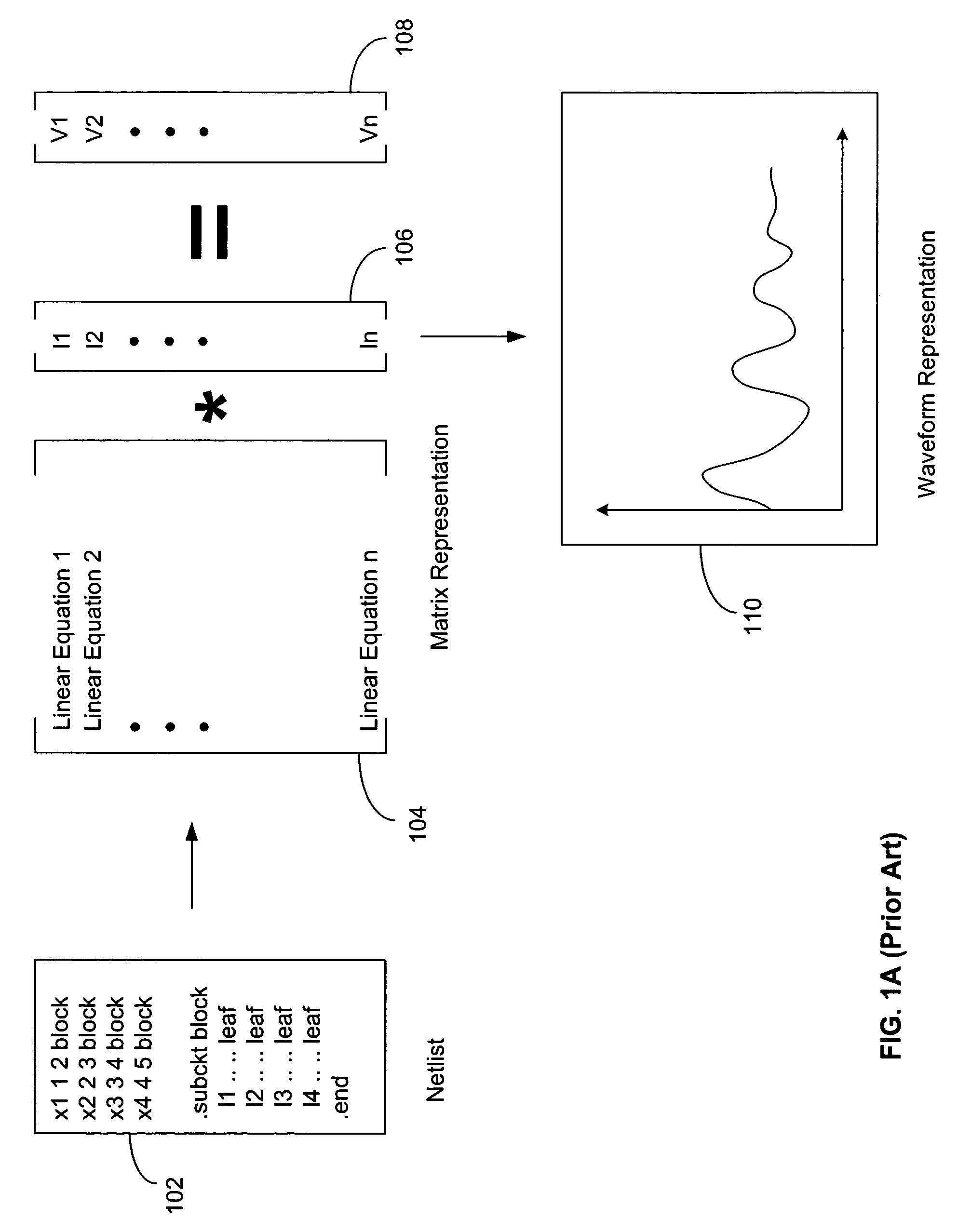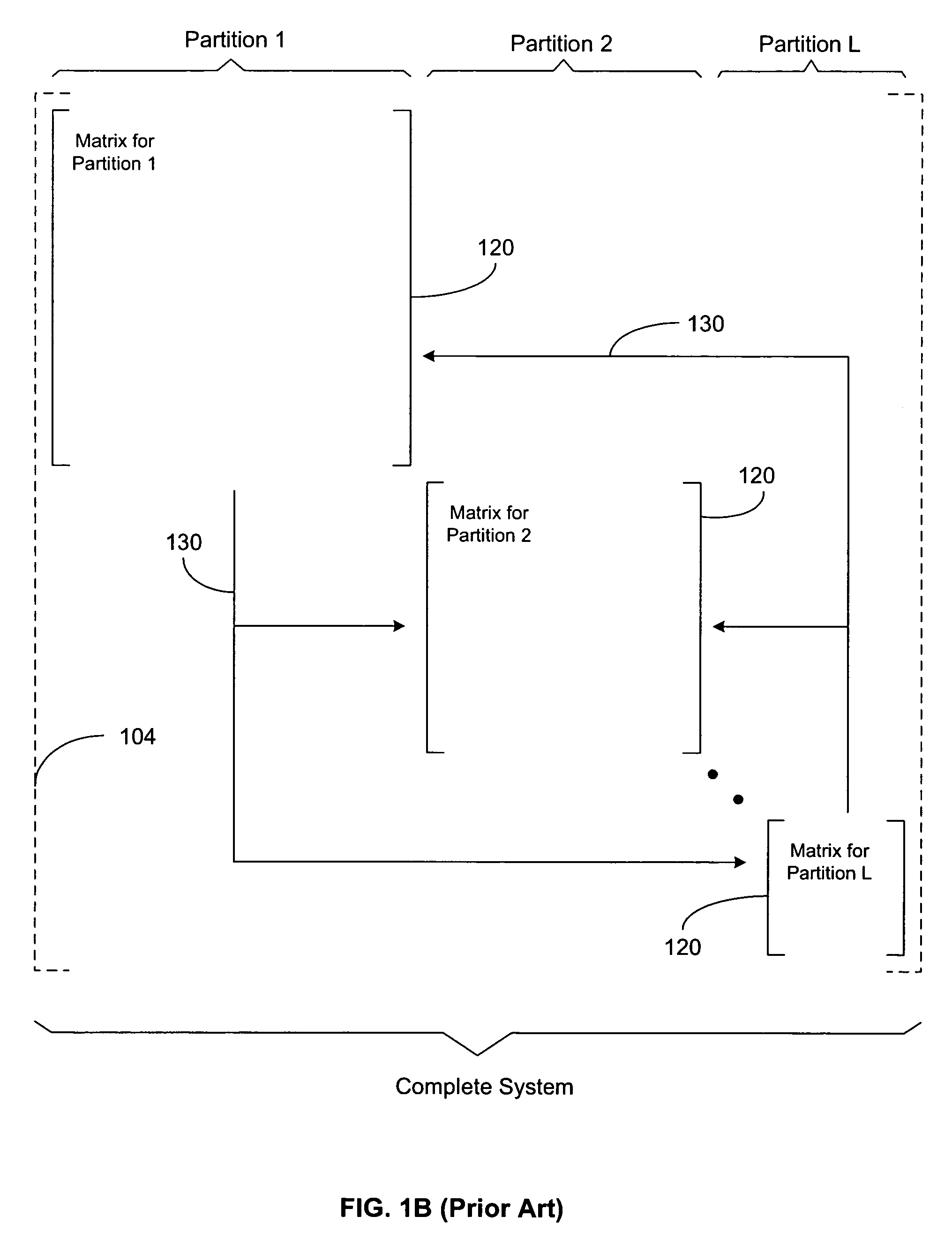System and method for adaptive partitioning of circuit components during simulation
a technology of adaptive partitioning and circuit components, applied in the field of simulation-implemented simulation of integrated circuits, can solve the problems of increasing the complexity of algorithms, increasing the complexity of spice-like simulation of a whole system, and increasing the complexity of matrix size to a degree which may not be solved, so as to reduce the number of computational repetitions, reduce the size of the solver matrix, and improve the simulation performance
- Summary
- Abstract
- Description
- Claims
- Application Information
AI Technical Summary
Benefits of technology
Problems solved by technology
Method used
Image
Examples
Embodiment Construction
[0055]The following description is provided to enable any person skilled in the art to which the invention pertains to make and use the invention and sets forth the best modes presently contemplated by the inventors for carrying out the invention. Various modifications, however, will remain readily apparent to those skilled in the art, since the basic principles of the present invention have been defined herein specifically to implement a circuit simulator having a hierarchical data structure. Any and all such modifications, equivalents and alternatives are intended to fall within the spirit and scope of the presently claimed invention.
Definitions
[0056]Primitive Database (PDB). A primitive database is a database containing the skeleton of the data structure and connectivity of a circuit. It contains unresolved parameters of the components of the circuit.
[0057]Static Database (SDB). A static database contains the topology and geometry of a circuit under simulation. It represents the ...
PUM
 Login to View More
Login to View More Abstract
Description
Claims
Application Information
 Login to View More
Login to View More - R&D
- Intellectual Property
- Life Sciences
- Materials
- Tech Scout
- Unparalleled Data Quality
- Higher Quality Content
- 60% Fewer Hallucinations
Browse by: Latest US Patents, China's latest patents, Technical Efficacy Thesaurus, Application Domain, Technology Topic, Popular Technical Reports.
© 2025 PatSnap. All rights reserved.Legal|Privacy policy|Modern Slavery Act Transparency Statement|Sitemap|About US| Contact US: help@patsnap.com



